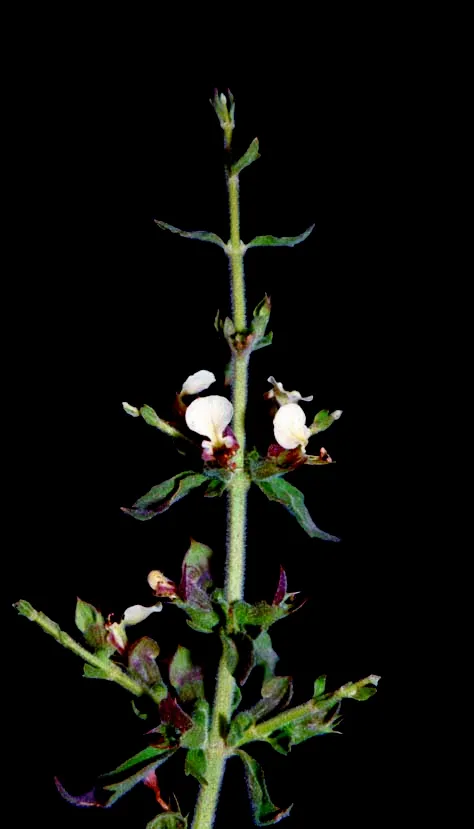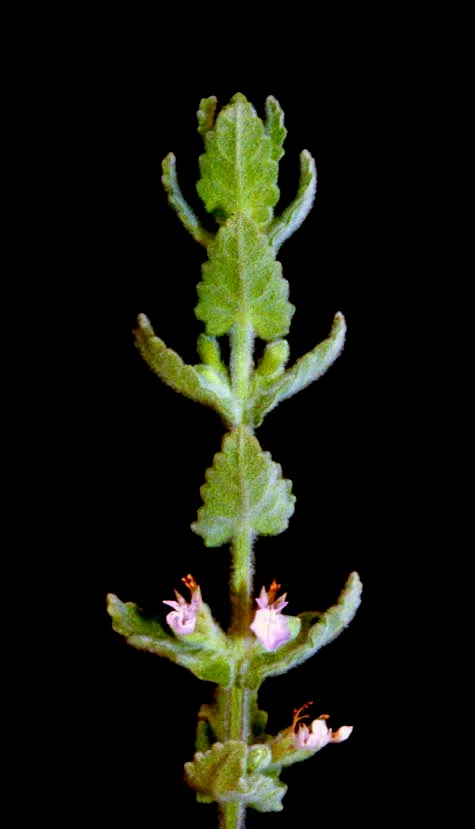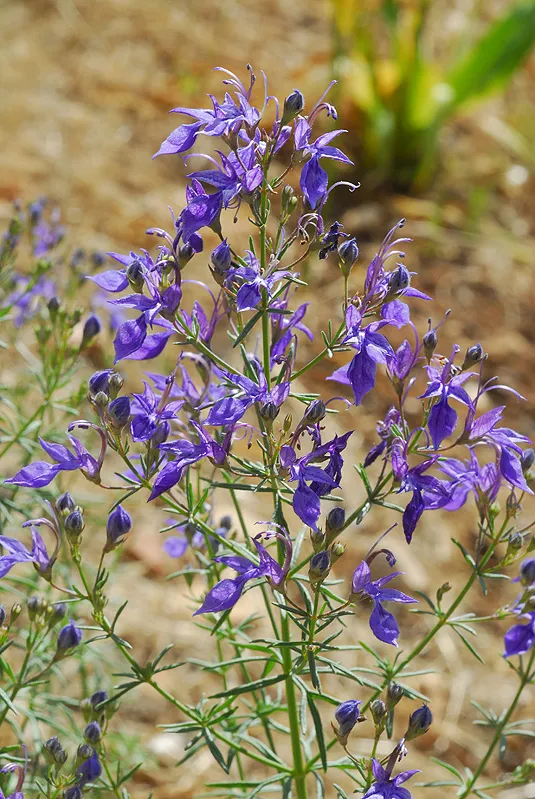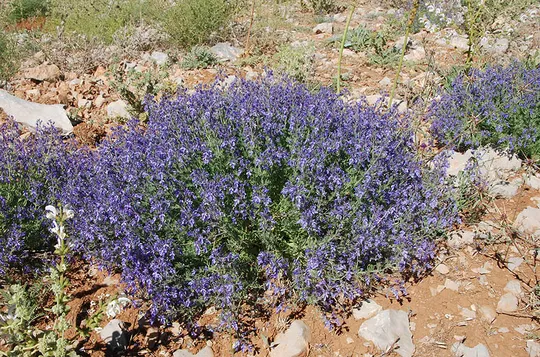Small-flowered Germander
Teucrium parviflorum
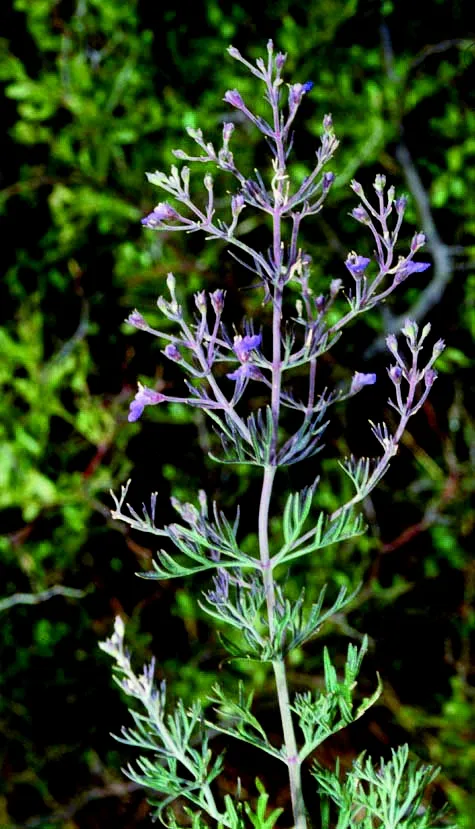
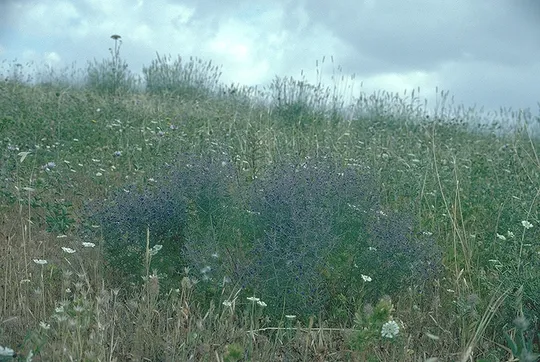
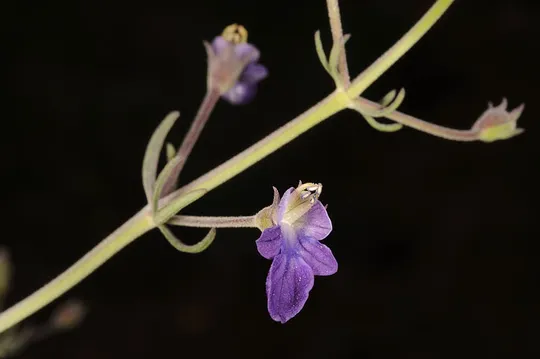
Teucrium parviflorum is known in Israel from 17 sites, in five regions: Golan Heights, Lower Galilee, Jezreel Valley, Gilboa and Southern Judean Mountains. Its distribution center is in the Lower Galilee and the Jezreel Valley, where most of the sites are located. During the rare species survey (1993), 12 sites were found in the eastern Lower Galilee, while in the Jezreel Valley only a single site was found, of the 9 sites that were known to us before Israel's War of Independence! In the Gilboa the species was collected twice, in Ma'ale Gilboa in 1963 and near Arabone in 1943, and has not been collected since then! All our efforts to locate it during the rare species survey (1994) were unsuccessful. In the Judean hills it was collected only three times, twice on the Ma'on Ridge in 1967 (Bet Yatir and Tel Krayot Reserve) and a third time near Dahariya in 1969. Since the 1990s, the plant was no longer found in the area of Bet Yatir and Mount Amasa, despite all the efforts made to locate it.
Heavy soil grain fields and abandoned fields and rocky slopes in the Mediterranean-desert ecotone, growing among herbaceous plants.
The genus Teucrium has about 300 species, which are found throughout the world. The main speciation centers are located in the Mediterranean and Irano-Turanian regions. The range of Teucrium life forms varies from annuals to subshrubs. The most prominent feature in the genus Teucrium is the single-lipped corolla, with four stamens protruding from it. The corolla lip is divided into lobes, with the central one larger than the lateral ones. The calyx is tubular-campanulate. T. parviflorum belongs to a group of Teucrium whose flowers are a beautiful blue. In Israel, the group includes T. orientale, which grows on Mount Hermon and on the Golan Heights peaks, T. procerum, which grows on the coastal plain and T.pruinosum that grows in Jordan and possibly in the northern Golan. This is an Irano-Turanian group, typical of mountain steppes and the highlands of the Middle East, in particular the Anatolian highlands of Turkey. Most species grow in the semi-steppe belt, and only one species, T. procerum, penetrated the coastal plain, similar to Iris atropurpurea, which is derived from the Royal Irises (Oncocyclus) of the Mediterranean-desert ecotone. In addition to their characteristic large blue flower and their late flowering season, all the members of the group have pinnate leaves.
• Teucrium parviflorum was once common throughout the Jezreel Valley. The survey found that the species had completely disappeared from the western part of the valley and survived only in the eastern Jezreel Valley and in the eastern Lower Galilee. This type of survival model was also found in other species, and it originates in the more modern cultivation methods used in the western part of the valley. There is concern that the trend of a reduction in the number of sites due to intensive cultivation will continue, resulting in the extinction of additional populations, in other regions as well.
• At some sites, only 2-8 individuals were counted, but in the eastern Lower Galilee sites, especially those of Mount Yavne’el, sites were found with 200 and 300 plants in an area of about 10 ha.
• Most of the sites are located outside nature reserves. The sites in the Eastern Galilee are remote from settlements and are not easily accessible, and it is important to declare them nature reserves before unplanned disturbances occur.
A nature reserve of ecotone shrublands where Teucrium parviflorum frequently appears should be declared (parts of Mount Yavne’el). A thorough survey for T. parviflorum should be conducted on the Ma'on Ridge, in the Gilboa and in the Golan. A T. parviflorum population should be reintroduced to the Jezreel Valley.
Teucrium parviflorum grows in the Middle East: Iran, northern Iraq, Turkey (not in the west), Syria, Lebanon, Jordan (only in Gil'ad) and in Israel. It can be considered a western-Irano-Turanian element, which invades the eastern Mediterranean region.
Teucrium parviflorum is a rare herbaceous plant that grows only ecotone areas. Many of the populations have disappeared since the 1960s and there is concern that the number of current sites (17) will decrease because of their sensitivity to agricultural development. The reason for the disappearance of the populations in the Gilboa and in southern Judea is not clear, and it is also be possible that they have not been sufficiently searched for.
Current Occupancy Map
| 1000 squre meter pixel | 5000 squre meter pixel | 10000 squre meter pixel | |
|---|---|---|---|
| number of observations | 0 | 0 | 0 |
| in total pixels | 0 | 0 | 0 |
| Family | Lamiaceae |
| Classification | On the endangered species list |
| Ecosystem | Semi-Steppe Belt |
| Chorotype | Western Irano – Turanian (Eastern Mediterranean) |
| Conservation Site | Mount Yavne’el |
| Rarity |
1
2
6
|
|---|---|
| Vulnerability |
0
2
4
|
| Attractiveness |
0
1
4
|
| Endemism |
0
0
4
|
| Red number |
1
3.2
10
|
| Peripherality | N |
| IUCN category | DD EW EX LC CR EN VU NT |
| Threat Definition according to the red book | Vulnerable |
 Based on:
Based on:
